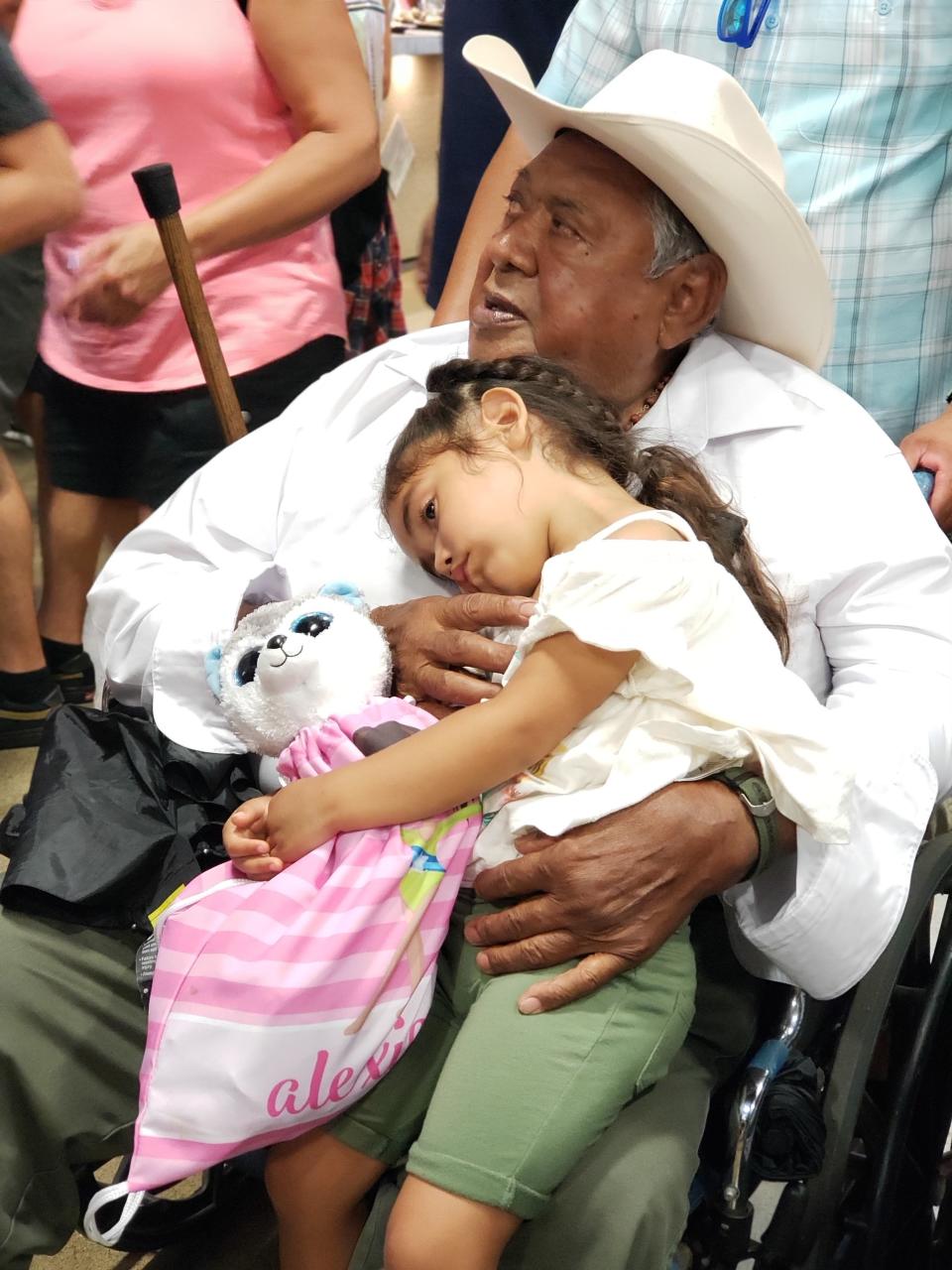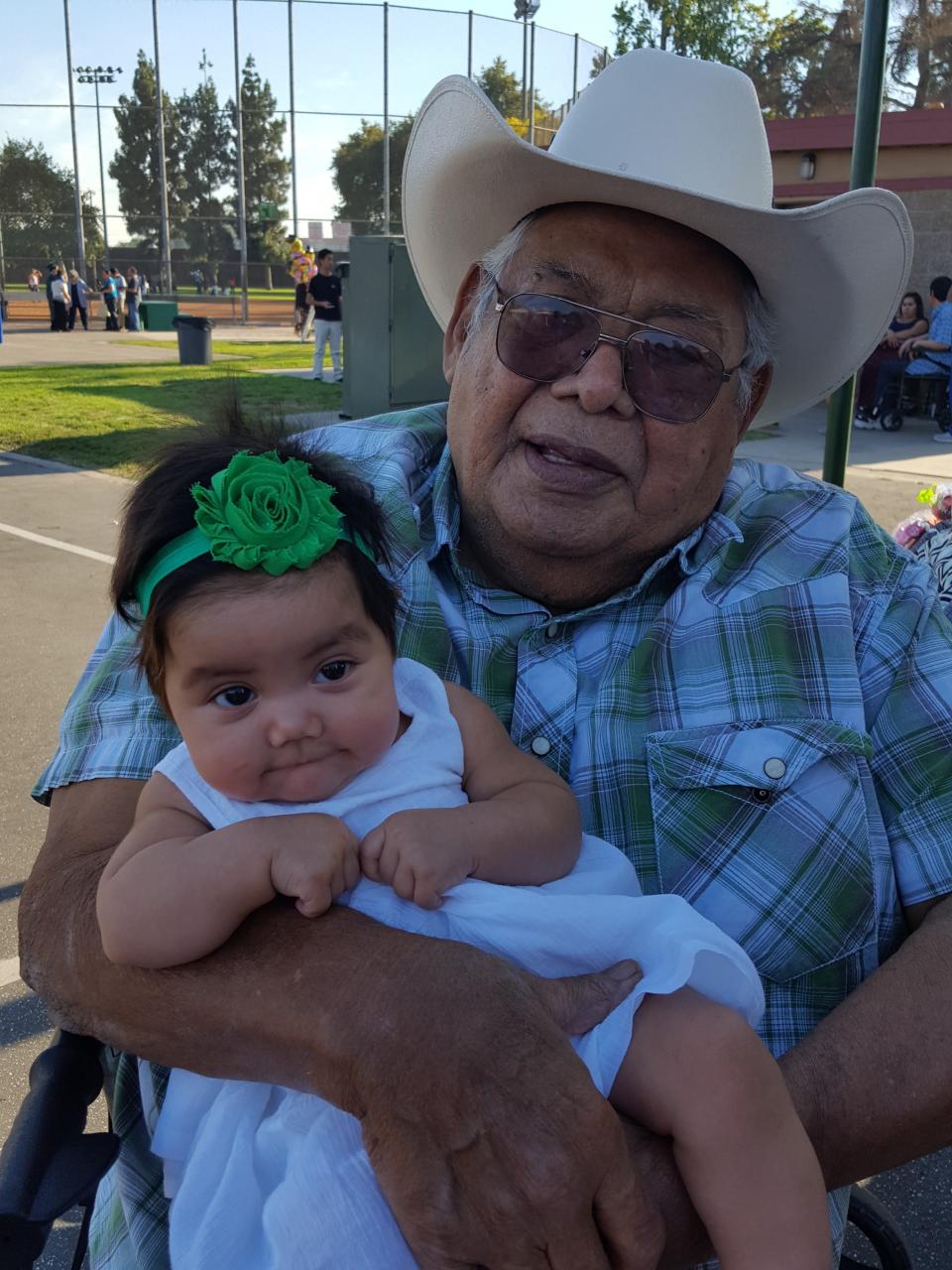California Latinos of all age groups ‘multiple’ times more likely to die from COVID-19 than whites, UCLA study finds
On Nov. 15, a doctor at Kaiser Permanente Downey Medical Center in Los Angeles called Jose Andrade to tell him his father’s battle with COVID-19 was coming to an end.
Andrade rushed to the hospital but didn't make it. By 2 p.m., Arturo Andrade had died.
Jose stood in the hospital room weeping and held Arturo's hand. “You’ll be very missed,” he told his dad.
Arturo Andrade, 81, an immigrant from Mexico, made his home in East LA, retired as a school cafeteria worker and sent money back to San Domingo to support family members.

The "gentle" listener, who suffered from kidney and heart disease, was among the staggering number of Latinos in California who died of COVID-19 last year.
Latino people in the state were two to eight times more likely to die of COVID-19 than non-Hispanic white people, according to a study from the University of California, Los Angeles that examined the toll from summer through late January.
People of color have disproportionately suffered from COVID-19. In California, Hispanic or Latino people make up 39% of the population but 46% of deaths and more than half of all cases, the state reported.
"Latinos are overrepresented in many essential worker categories, from farm workers who provide California’s food to construction workers who build the state’s houses," the study's authors wrote, urging the state to prioritize vaccinations and medical care.
The UCLA study found Latinos age 80 and older were more than twice as likely to die as white people in the same age group.
That disparity deepened when researchers analyzed younger groups. Latinos ages 65 to 79 died at more than four times the rate of white people; ages 50 to 64, nearly six times; and ages 35 to 49, seven to eight times.
Even younger patients diagnosed with COVID-19, those 18 to 34, were five times more likely to die than white people of the same age.
“What was astounding was that in every age group, the Latino death rate was multiple times higher than white – multiple,” said David Hayes-Bautista, UCLA professor of public health and medicine and lead author of the study. The death disparities, he said, have “shown a glaring spotlight" on a long history of barriers to health care.
"They’re not able to seek care until it’s too late," he said.
Hayes-Bautista, who directs the Center for the Study of Latino Health and Culture at the UCLA medical school, said California’s disparities probably mirror those elsewhere.
“Given that we see basically on both ends of the country – California and New York – fairly similar patterns, I would right now be very comfortable generalizing it out to the other areas as well, realizing there will be regional variation,” he said.
Data scientists behind Atlas, an interactive COVID-19 tracking platform at the University of Chicago Center for Spatial Data Science, said UCLA's breakdown by age group reveals important insights, such as the pandemic's impact on working-age populations.
Age is critical, they noted, when analyzing Hispanic populations: The U.S. Census Bureau's American Community Survey estimated 43% of California's Hispanic population is 24 or younger versus just shy of a quarter for non-Hispanic whites, the University of Chicago center noted.
An analysis of death certificate data by the Centers for Disease Control and Prevention showed that after American Indians, Hispanic people were second most likely to die of COVID-19, followed by Black people.
High death rates among Latinos are seen in states with large Hispanic populations, including Arizona, New Mexico and Texas.
Epidemiologist Myriam Torres, director of the University of South Carolina’s Consortium for Latino Immigration Studies, pointed to systemic inequities affecting communities of color, creating vulnerability to the disease: poor access to health care; comorbidities such as diabetes or obesity, which both disproportionately affect Hispanic people; low-income jobs that make it hard to take time off for a vaccine or coronavirus test; and Hispanic populations’ overrepresentation in essential jobs where working from home isn’t an option.

“Many living situations of migrant farmworkers and farmworkers are really crowded and are high-risk,” Torres said, noting multigenerational households make social distancing difficult. “There are these beautiful commercials saying, 'You need to be isolated,' and, 'You need to use your own bathroom' – that’s sometimes impossible for many of us.”
School shutdowns, job losses and lost work hours among Latino essential workers could have exacerbated high-risk situations.
As public health officials warn of another wave following spring break, Hayes-Bautista worried about the detrimental impact of COVID-19 on younger Latinos.
“While young adults tend to not have a very high mortality rate, nonetheless Latino young adults had a … higher mortality rate than non-Hispanic whites,” he said. “That could possibly lead to a fourth wave. All we need to do is let our guard down to get out of control again.”
Jose Andrade said several people in his circle have lost loved ones. He was able to pay for his dad's burial, but others weren't able to afford a funeral.
"It resulted in some families receiving these phone calls (from the morgue) saying, ‘We need to do something here. We don't have the space,’” he said. "It highlighted the fact that families like mine, families in my community, were definitely deeply impacted by COVID."
Reach Nada Hassanein at nhassanein@usatoday.com or on Twitter @nhassanein_.
This article originally appeared on USA TODAY: California Latino COVID-19 death rates many times higher than whites'

